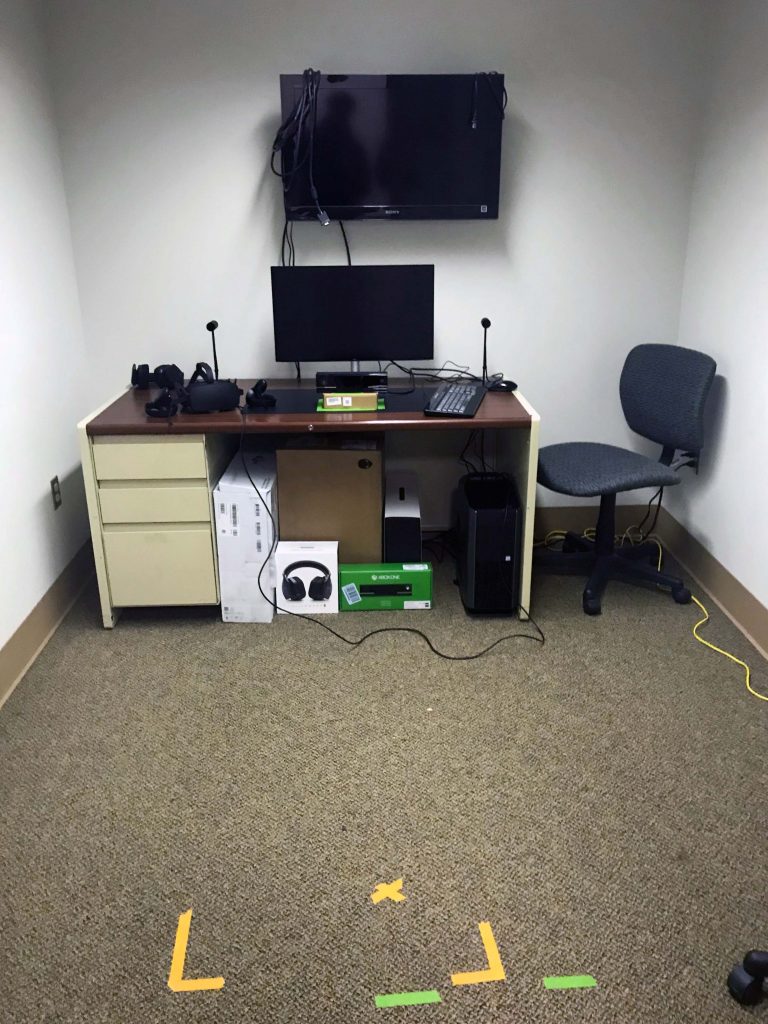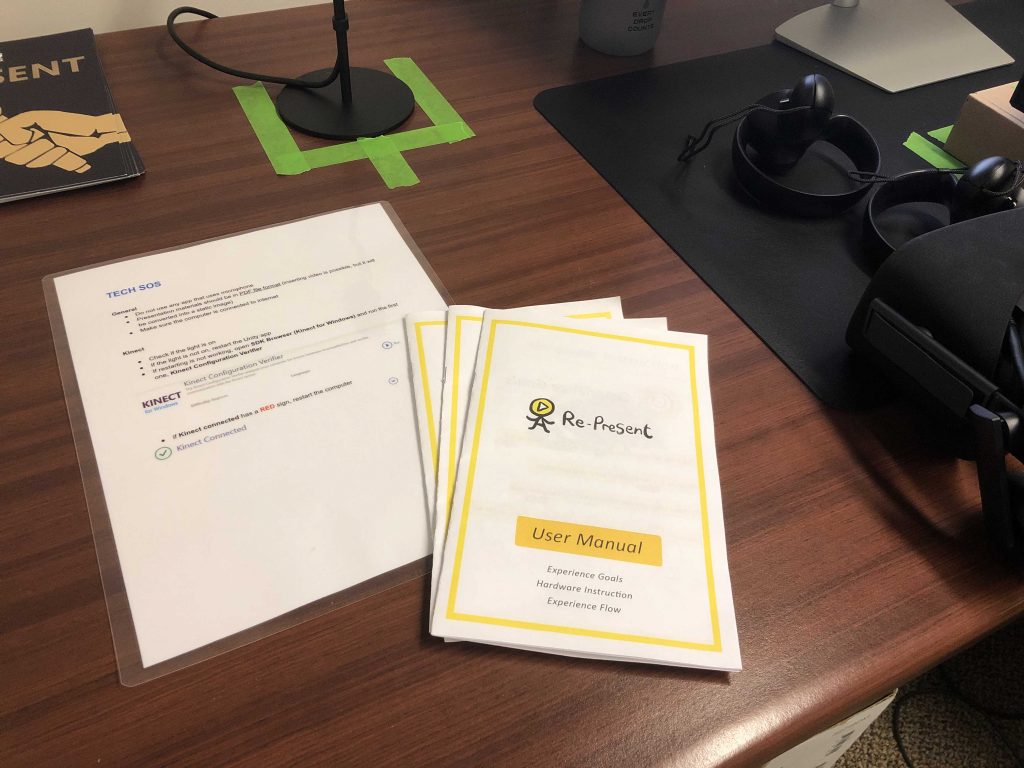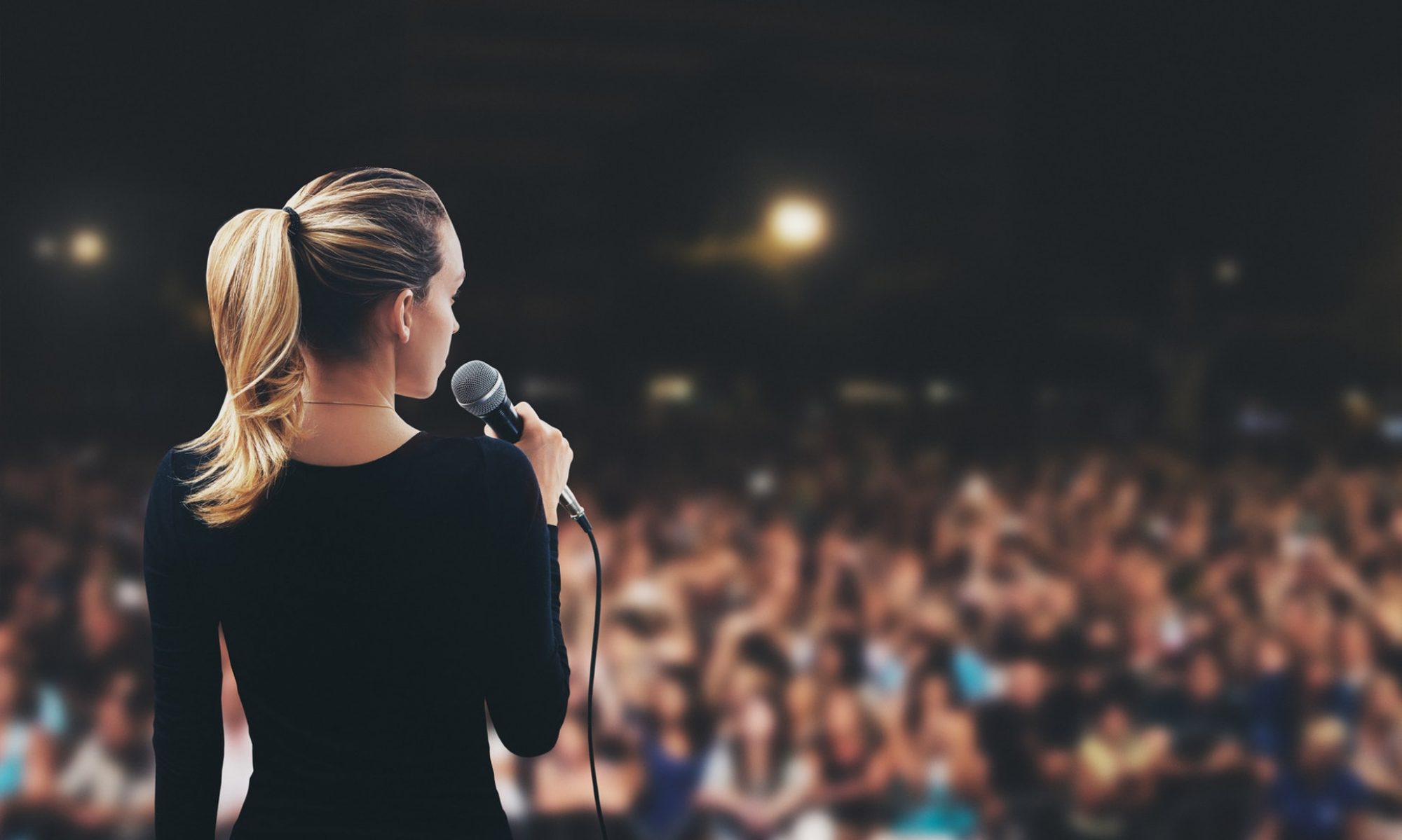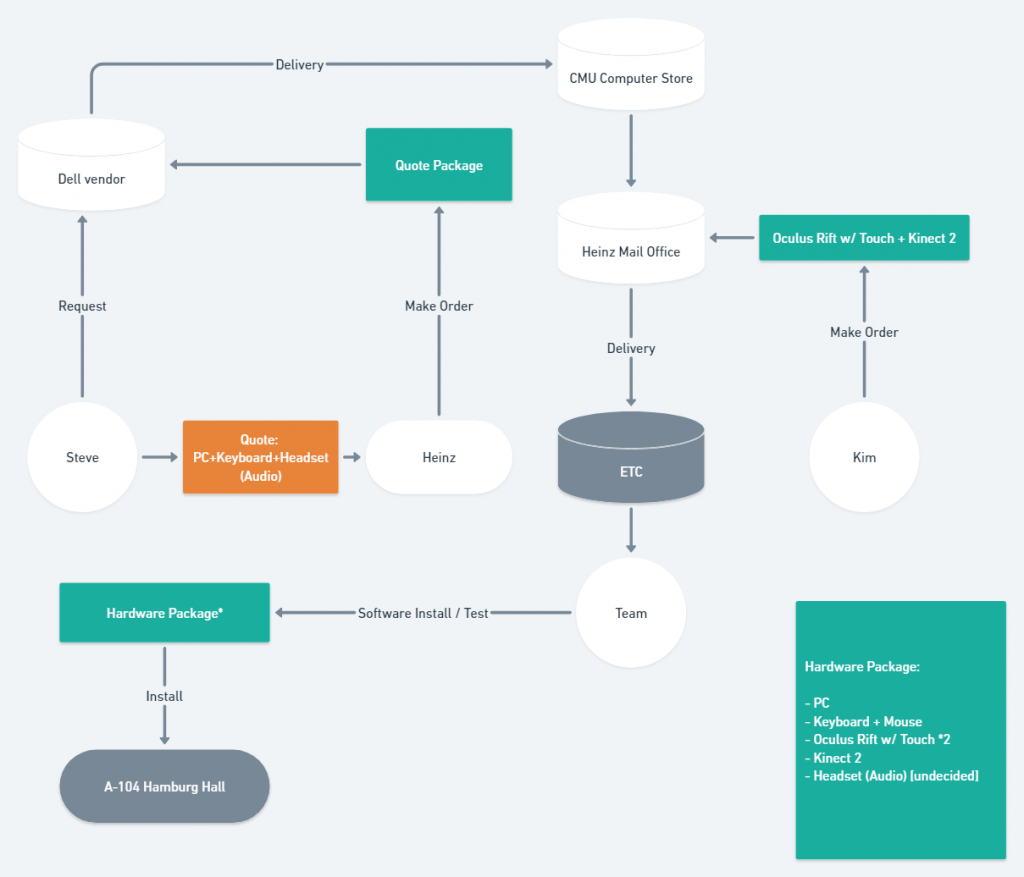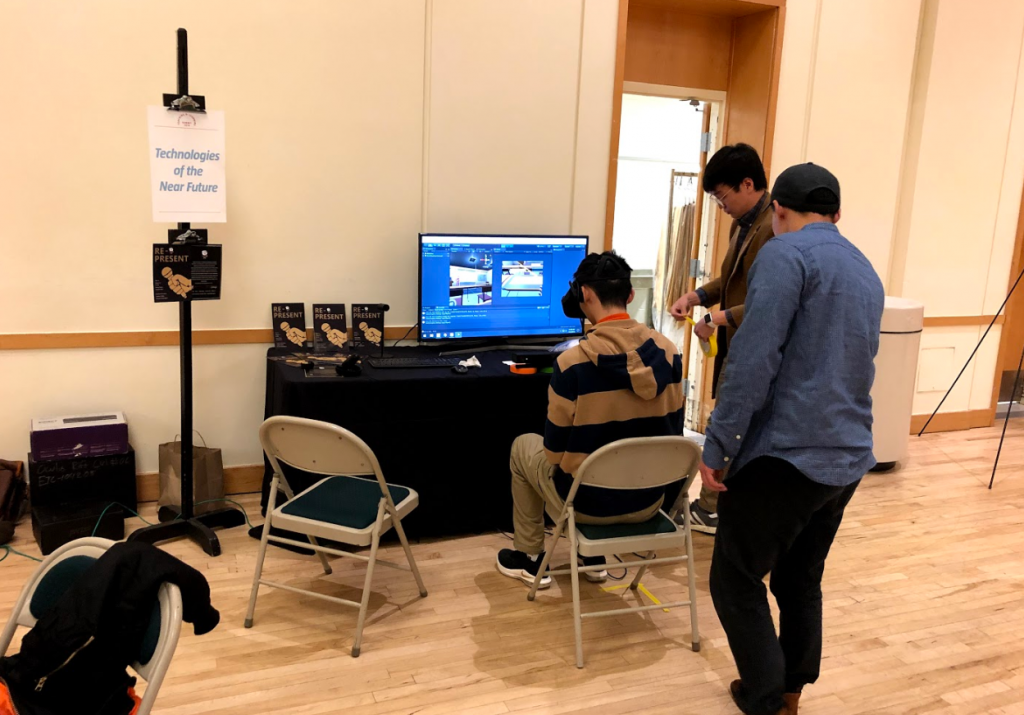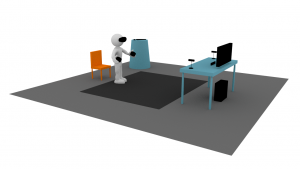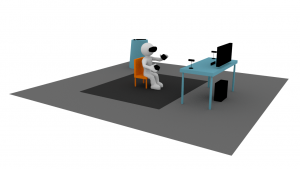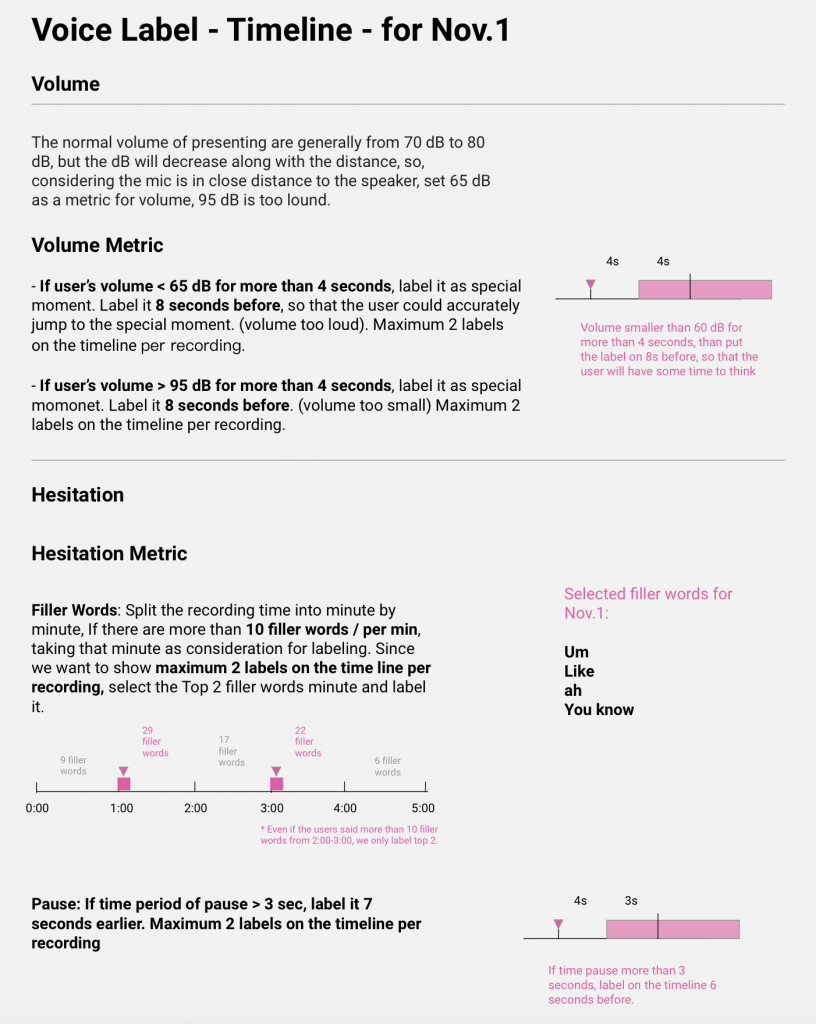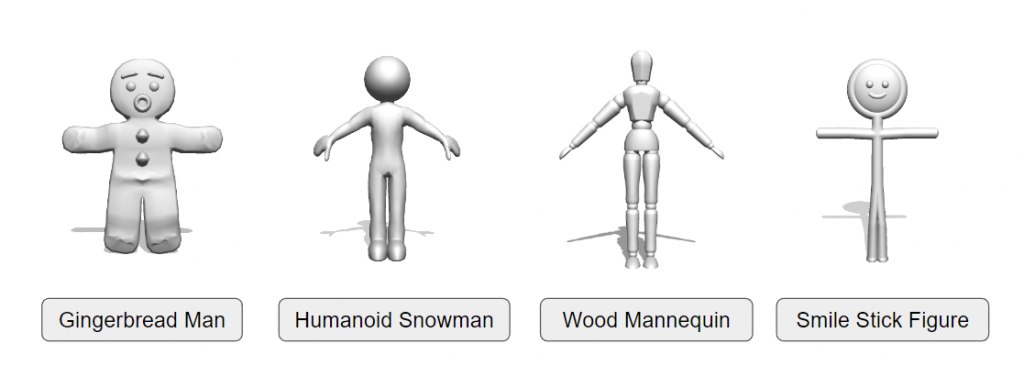[Production]
After gaining feedback from Summit and Community playtest, we discussed our next steps and critiqued on our scope for the following weeks.
In order to ensure the effectiveness of the product, as well as balance the workload of teammates, we decided to ditch some features that were secondary to our design pillars: enlightening, motivating and effortless.
After rounds of reasoning, we updated our latest user journey map:
(Click to see details)
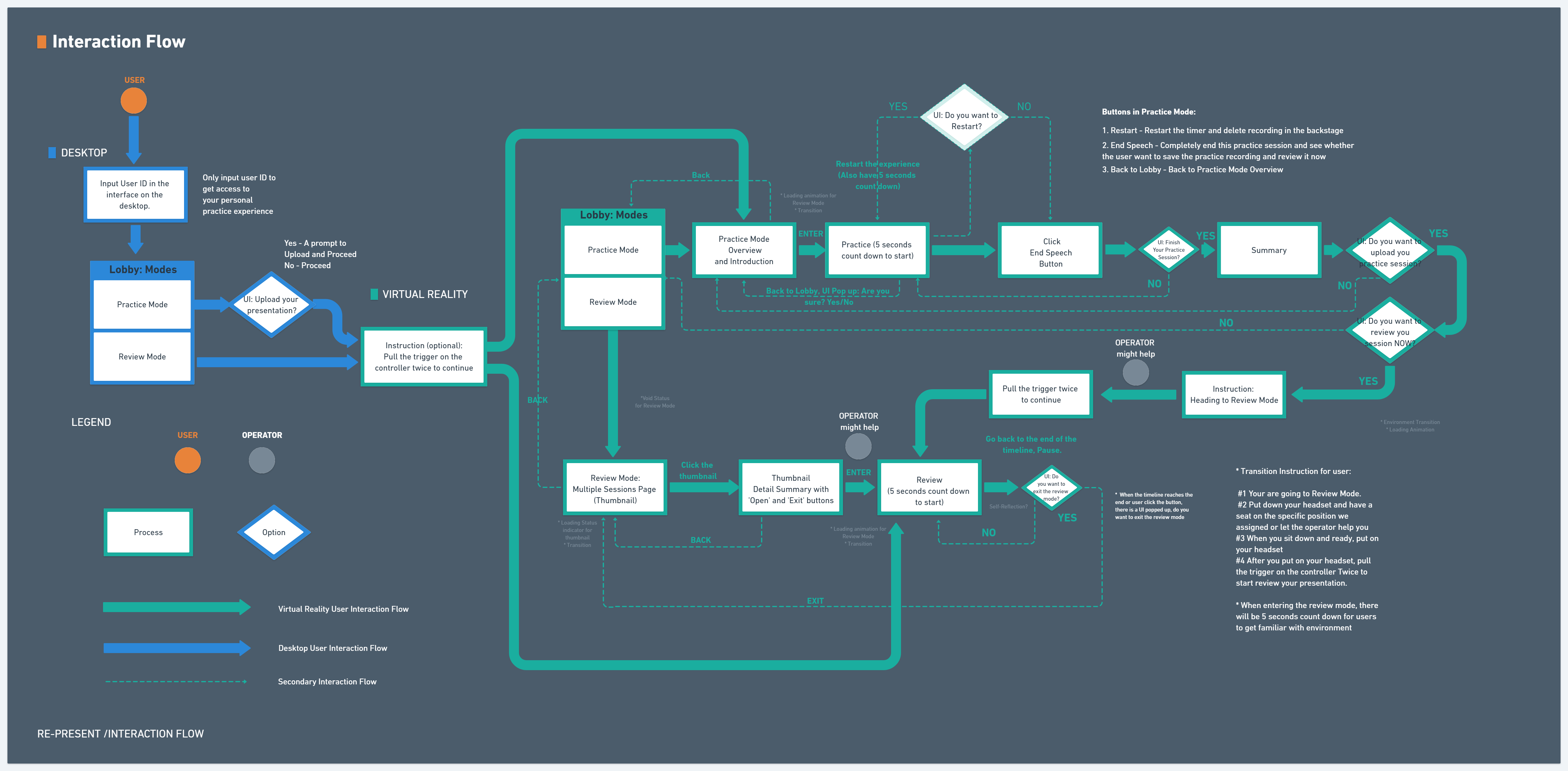
We are planning to implement the features that are critical to the completion of an entire user loop before the soft opening.
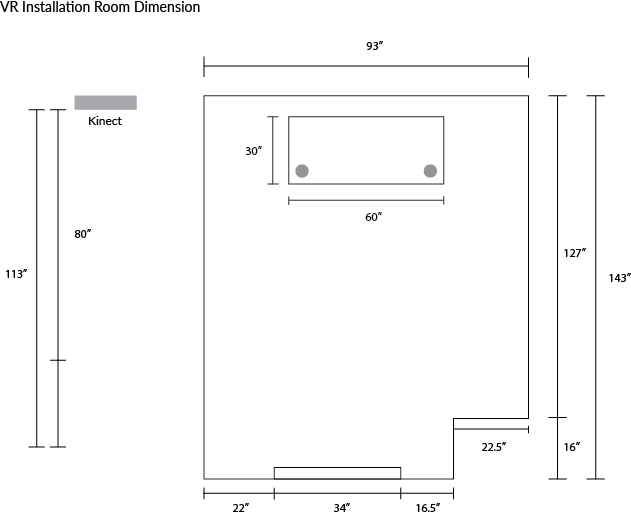
Meanwhile, we did an onsite visit to the installation room located on CMU main campus and measured the dimension to ensure that the final product will deliver well during later handover period.
[Technical]
We implemented the eye gaze feature in the Review Mode in two main aspects:
1. Gaze cone visualization: direction of the presenter’s gaze is visualized as cone ray.
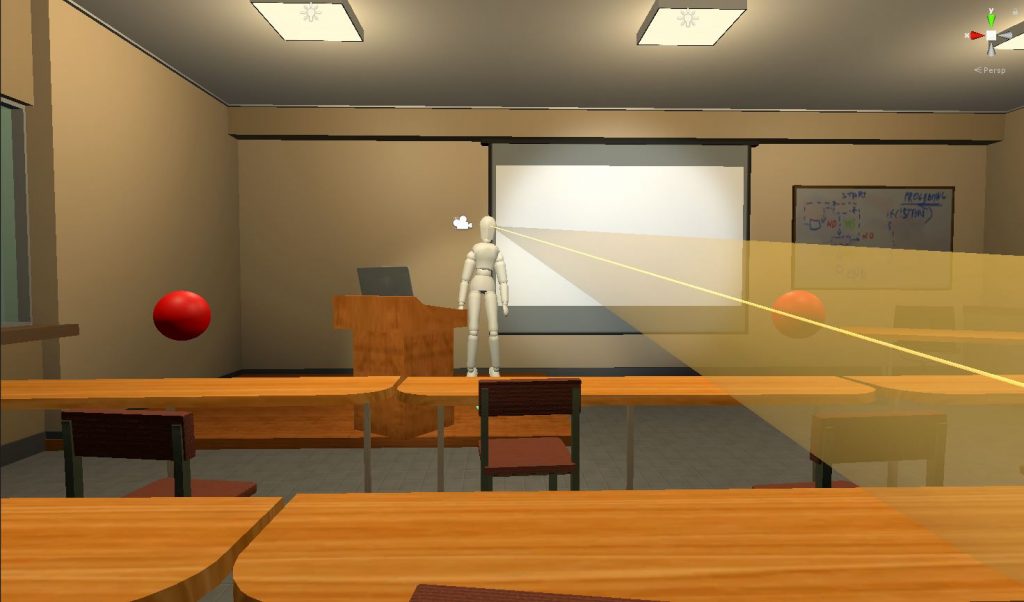
2. Object highlights: projection screen, laptop and clock will be highlighted when the present looks at them.
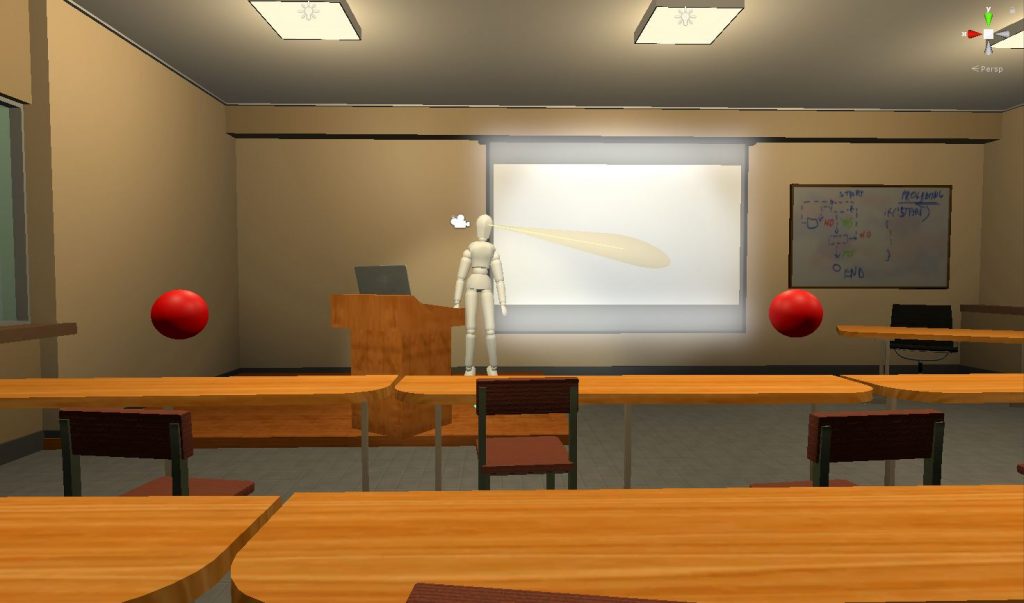
Next:
Attention ball change of state: the red attention ball will turn green when they get more attention from the presenter.
